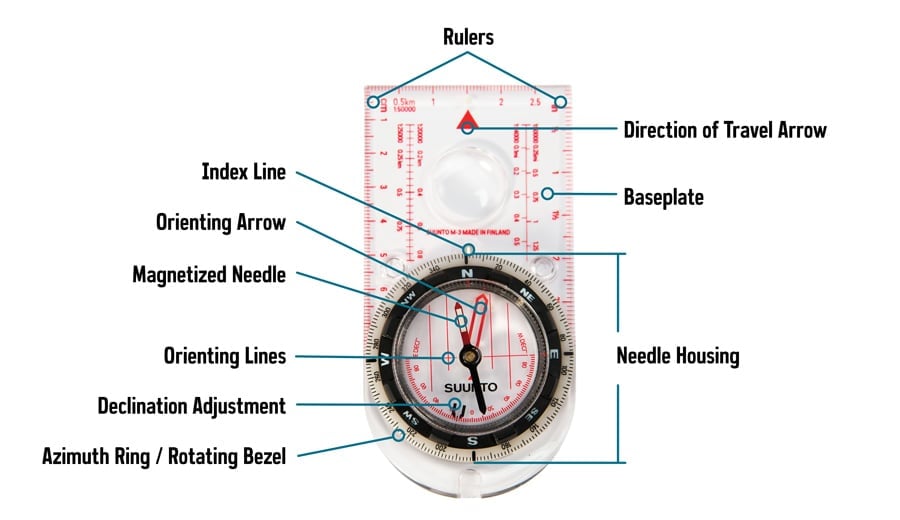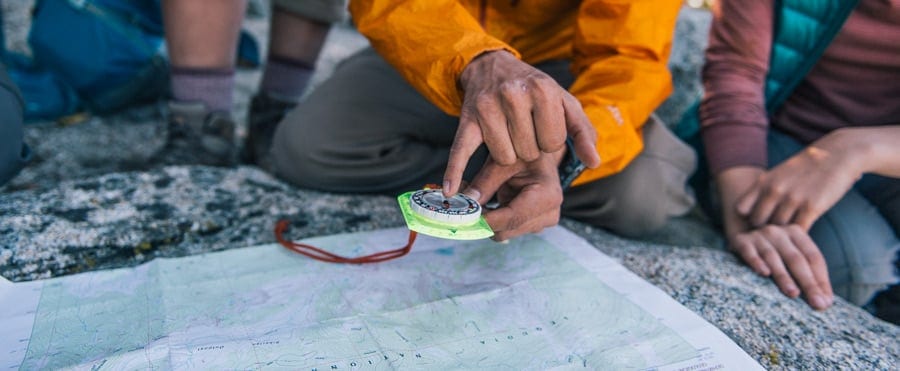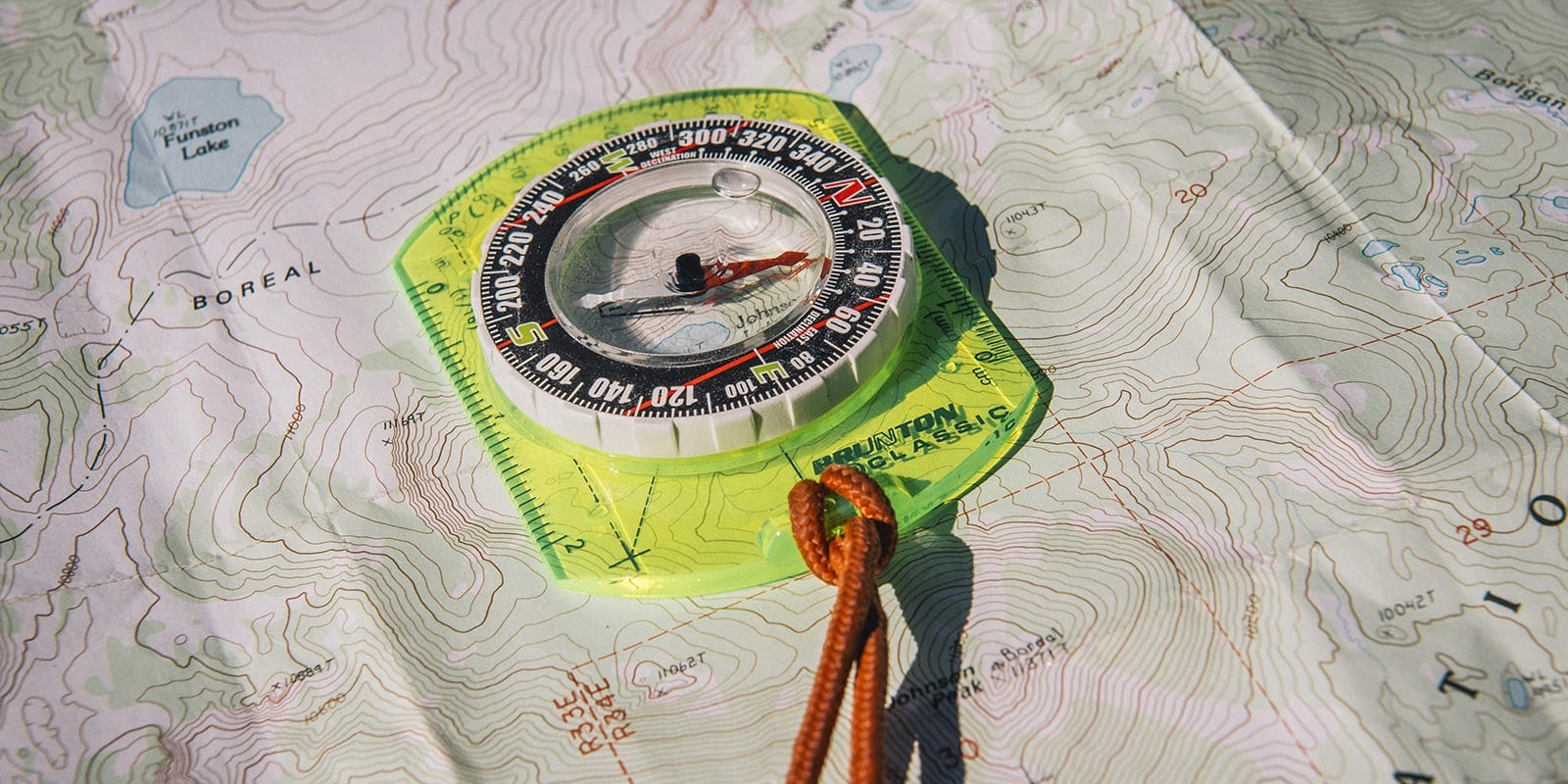The ability to navigate with map and compass is a crucial skill, one that can literally save your life. Your compass and map can also do other helpful tasks like telling you where you are, what's around you and the best way to get where you want to go.
In the Ten Essentials, the compass and map are both mandatory gear, while a GPS receiver is optional. The quick explanation for this is the adage "never trust your life to a battery." Dedicated GPS receivers and cellphone apps are amazing tools, but should never be solely relied upon to find your way out of the wilderness.
There are four main features to look at when choosing a compass:
- Declination adjustment: A capable compass for hikers and other trail users should have this.
- Sighting mirror: Move up to a model with both declination adjustment and this feature if you plan to travel off trail or want more precise navigation
- Clinometer: For mountaineering and backcountry skiing, a compass with a clinometer can help you assess avalanche hazards. Field scientists and search-and-rescue professionals also like to have a clinometer.
- Global needle: If you're a world traveler or simply going on a trip that takes you south of the Equator, get a model with a global needle.
Compass Features

While all compasses point in their designated direction, they can also have a wide array of additional features. Generally a more feature-rich compass costs more, though the build quality (precision and durability) also factors into the price you pay.
Basic Compass Features
- Magnetized needle: Usually the red end of a pivoting compass needle, it points to the magnetic pole. Most needles float in a damping fluid that helps steady their movement. The fluid won't freeze but it sometimes forms bubbles, which typically don't impact needle movement.
- Rotating bezel (or azimuth ring): Used for taking a bearing in the field, this ring marked with degrees from 0° to 360° encircles the outer edge of the needle capsule. The smaller the interval of degrees, the easier it is to navigate precisely.
- Baseplate: This flat transparent base has a wide variety of navigational markings, including a ruler to measure map distances.
- Orienting arrows and lines: The markings inside the needle housing and on the baseplate are used for a variety of basic navigational tasks.
Extra Features
- Magnifying lens: Some compasses have one set into the baseplate; it's handy for reading map details.
- Luminescent indicators: If you're starting before sunup or finding your way back after sunset, you'll be glad you have a compass that has this feature.
Beware of accessory and digital compasses: Compass lookalikes on keyrings, watchbands or zipper pulls are fun, but not serious navigational tools. Even a compass feature on a multifunction watch doesn't substitute for a basic needle-style baseplate compass.
Advanced Compass Features
- Declination adjustment: "Declination" is the difference in degrees between true north and magnetic north. Because declination varies depending on where you are, adjustable declination is important to have. With adjustable declination, you set it and forget it until you travel to a new region.
- Sighting mirror: Helps you aim more precisely when following a precise bearing on a distant landmark. Also doubles as an emergency signaling device.
- Clinometer: Allows you to measure the vertical angle (steepness) of a slope; helpful for assessing avalanche hazards and the heights of objects.
- Global needle: This feature compensates for magnetic-field variances and allows a compass to work smoothly and accurately worldwide. Otherwise, a compass is either North- or South-America specific.
Compass Use and Storage Tips

- Learn how to use your compass. A great way to do that is to take a class with the REI Outdoor School or another local outdoor organization. Before you buy a compass for class, though, ask your instructor what's required. You can also read our article, How to Use a Compass.
- Ferrous metal can distort a compass reading. Use your compass away from your car, or metallic objects like a metal picnic table or post. Even the iron levels in a lava field can have an effect. Electrical fields (a running car engine, for example) can also throw off the accuracy of a compass.
- Don't store a compass near a magnet or electric field. Over time, exposure can demagnetize the needle. Do not place your compass in your pocket next to your cellphone. Even a magnetic clasp used on the bite valve of some hydration reservoirs can be problematic.

